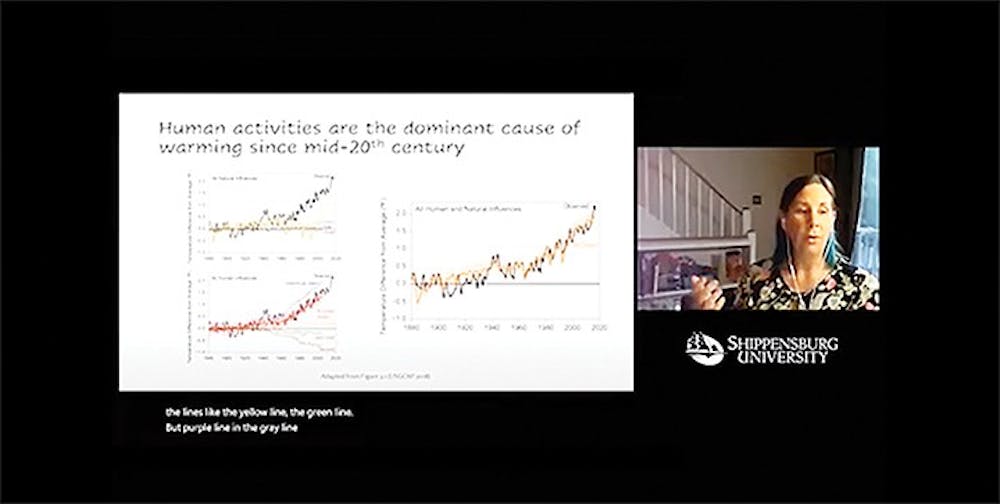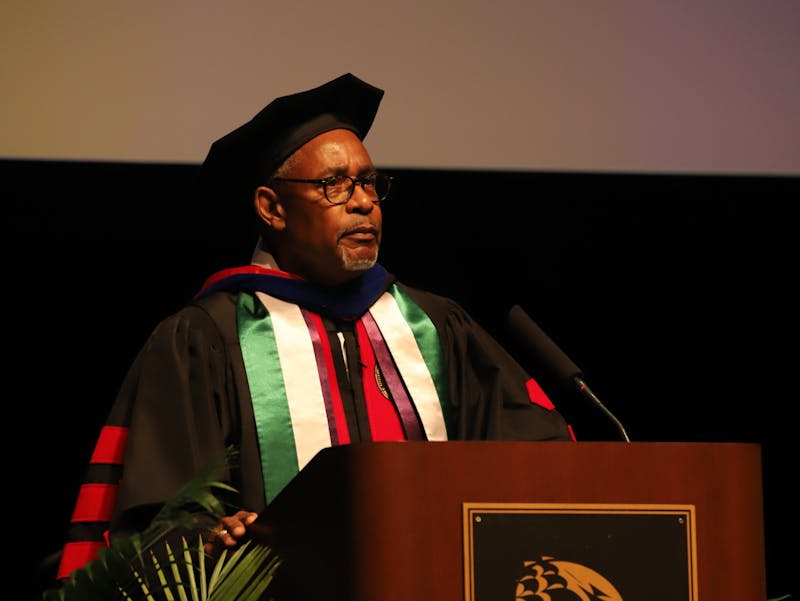The Shippensburg University Sociology Department hosted Emily Cloyd of the American Association for the Advancement of Science to speak about climate change Thursday.
Lawrence Eppard, an SU sociology professor, welcomed attendees to the lecture and introduced Cloyd. Cloyd is the director at the center for public engagement with science and technology for AAAS. She worked with the U.S. Global Change Research program and was a policy fellow at the National Oceanic and Atmospheric Administration before working at AAAS, Eppard said.
Cloyd covered the impacts of climate change on the world and on communities across the United States and what these communities are doing in response. The information in the lecture came from three primary sources, two volumes of the National Climate Change Assessment and “How We Respond” a report from AAAS, according to Cloyd.
Cloyd began her lecture by showing the warming temperatures across the world, a noticeable result of climate change. The increase in temperatures was shown by looking at the temperatures of air over land and the temperatures of the ocean.
“We also know this warming is not something we have seen in the recent past,” Cloyd said.
Using proxy-based and thermometer-based records that go back thousands of years show this change is new, according to Cloyd.
Cloyd said human activity has been the dominant cause of climate change since the middle of the 20th century. While the climate will continue to change, how much it will change is dependent upon human activity, according to Cloyd.
“We have a lot of opportunity to make choices about the future we want to see,” Cloyd said.
If society stays on the path it is right now, there could be a temperature change of four degrees celsius or more, but, Cloyd said, if there is more action taken there could be a smaller amount of change in only one or two degrees celsius.
Society can combat climate change through two major ways: increased resilience through adaptation and mitigation, Cloyd said.
Adaptation focuses on “increasing our ability to cope with changes that are underway,” Cloyd said, which includes limiting exposure and vulnerability to climate change.
Mitigation is limiting the severity of future climate change. A major part of this would be reducing the amount of greenhouse gases that are emitted. Shifting to low-or-no carbon fuels, reducing emissions from permafrost and agriculture and reducing greenhouse gases are all ways to achieve this, according to Cloyd.
Cloyd addressed how people can confront and reduce climate change but also confronted why society should take action now. Taking action sooner is the better option because not only will it limit the effects of climate change but leaves people more options on how to enact change, according to Cloyd. Overall costs of climate change can also be reduced; however, waiting to take action could result in a 40-50% increase in cost, Cloyd said, which could save billions of dollars.
While taking on climate change through action and working with scientific and government officials is necessary, simply talking about climate change is also a necessity, Cloyd said. Only 35% of adults talk about climate change regularly, she said. People are more likely to care about an issue and take action if their friends and family talk about it which makes it an important first step, Cloyd said.
Cloyd closed the lecture by asking the audience, “How will you respond? What are the kinds of things you would like to do in your own communities?”
The event was wrapped up with a question and answer session using the chat in Zoom. For more information about AAAS, visit aaas.org.




The Slate welcomes thoughtful discussion on all of our stories, but please keep comments civil and on-topic. Read our full guidelines here.